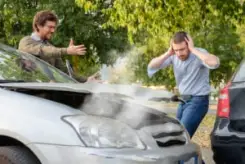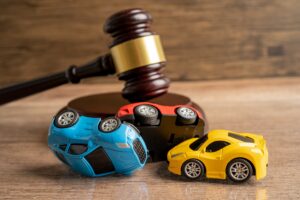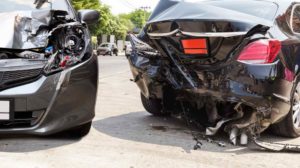
If you are considering legal action following a vehicle crash, it is important to gather compelling evidence of negligence in a car accident. This evidence could vary from witness statements to video recordings and even admissions by the other driver. Obtaining this evidence is not always easy, but we can take care of this task for you.
Negligence is proven by showing that the driver behaved recklessly or carelessly, which caused your accident, injuries, and losses. In other words, proving negligence will entail gathering evidence to show that the other driver’s actions were in line with the four elements of negligence, as it is known in personal injury cases.
Evidence that Can Prove Negligence
There are many forms of evidence that could be useful for establishing a negligence case. Some examples include:
Party Admissions
Following some accidents, the at-fault party will admit responsibility for the crash. This admission could be made directly to the injured motorist or to the responding police officer. The person that overhears this admission could testify to it at trial.
Video Evidence
Some of the most powerful pieces of evidence of negligence are videos of the collision. When the jury can see the accident unfold for themselves, it can eliminate some of the uncertainty that surrounds an accident. This video evidence could come from a dashboard camera or a surveillance camera near the scene of the collision.
Medical Records
Often, the most important evidence for establishing damages in a car accident case is the plaintiff’s medical records. These records could not only establish the severity of the injury but also prove the cost of that medical care.
Witness Testimony
The testimony of a witness – especially one without any connection to either party involved in the crash – can also be powerful at trial. The recollection of an independent third party could carry a lot of weight with a jury.
Criminal Convictions
While not all traffic accidents will result in a ticket or an arrest, some do. In these cases, evidence that the other driver was convicted of a violation at the time of the accident could be used to establish negligence.
Photographs
Photographic evidence can be useful in many ways. Photos of your injuries could give the jury insight into their severity. Photos of the accident scene could help them understand how the crash happened. Finally, images of the vehicles could establish the nature of the crash.
For a free legal consultation, call (404) 888-8888
Car Accidents FAQs
What Steps Should I Take If I Suspect a Hit-and-Run in Atlanta?What Types of Compensation Can I Expect From a Car Accident Claim in Decatur?How Can a Decatur Car Accident Lawyer Help Me?What Is the First Thing to Do After a Savannah Car Accident?How Long After a Car Accident Can You Claim Injury?Can I Sue for Anxiety After a Car Accident?Establishing Negligence in a Car Accident Case
Before you can prove negligence in a car accident lawsuit, you must first understand what constitutes negligence in the first place. There are four elements required to prove negligence, and the evidence needed to establish each element can vary. These elements are the duty of care, breach of this duty, causation, and damages.
Duty of Care
The first step in a motor vehicle accident case is to establish a duty of care was owed by the defendant to the plaintiff. While this can be difficult to prove in other types of cases, it is rarely at issue in vehicle accidents. This is because all drivers owe one another a duty to operate their vehicles in a safe and responsible way.
Breach of the Duty of Care
Proving that this duty was breached can be much more difficult. In fact, this is often the central issue in vehicle accident litigation. Any careless or reckless act that results in a vehicle crash could be evidence of the breach. Often, this evidence includes proof of a traffic violation or other criminal act.
Causation
The third step for a plaintiff in a motor vehicle accident case is to link their injuries to the defendant’s breached duty of care. This step is known as causation. Without causation, the at-fault driver is not responsible for your injuries.
Damages
The final requirement for proving negligence involves your damages. You may only recover monetary compensation if you can show that your injuries result in some type of compensable harm. Compensable damages could be your medical bills, time away from work, or mental anguish.
Proving Negligence May Allow You to Seek Damages
The Centers for Disease Control and Prevention (CDC) notes that in 2016, fatal car accidents cost about $44 billion in medical expenses and lost work. Building a car accident case starts with a thorough investigation.
After building evidence that will prove the other driver was liable, we can then work to recover all damages you may qualify to pursue. You may be able to seek compensation for the following losses:
- Medical bills
- Lost wages
- Reduced earning capacity
- Pain and suffering
- Scarring and disfigurement
Depending on the nature of your injuries, you may require future care or ongoing care in order to heal. If you work with someone from our team, we will be sure to calculate all your accident-related losses, including your past, present, and future losses.
It is important to pursue all available evidence of negligence following a car crash. The financial impact of a car accident has the potential to be significant, and failing to demonstrate the other driver was at fault could leave you on the hook for your damages.
Complete a Free Case Evaluation form now
You Can Still Seek Compensation if You Were Partially Responsible
If your own negligence may have contributed to your car accident in some way, you may wonder how this could affect your case. The good news is that in the State of Georgia, you can still seek compensation after a car accident even if you share some responsibility for the accident.
Per O.C.G.A. § 51-12-33, you are only prevented from bringing a case for damages if you are deemed to be 50% liable or more. Essentially, you simply need to be considered less liable than the other party. This is known as comparative negligence.
If you are unsure about how comparative negligence laws may affect your case, we can tell you more about what to expect.
Click to contact our personal injury lawyers today
Discuss Your Negligence Case with Bader Scott Injury Lawyers
Building a strong case for negligence is only one of the ways our car accident attorneys could help following a motor vehicle accident. The team at Bader Scott Injury Lawyers understands what evidence is needed to prove negligence in a car accident.
To get started with your case, get a free consultation by calling (404) 888-8888 right away.
Call or text (404) 888-8888 or complete a Free Case Evaluation form

